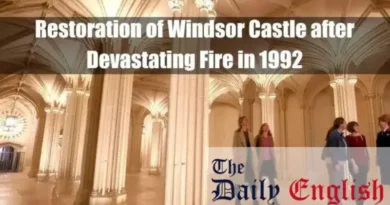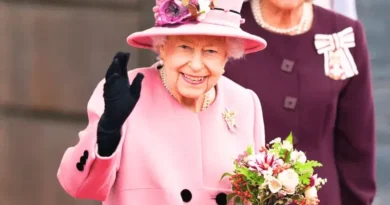When Was Windsor Castle Built
Windsor Castle, located in Berkshire, England, was initially constructed by William the Conqueror around 1070, shortly after his 1066 invasion. The original structure was a timber motte-and-bailey design strategically positioned to oversee the River Thames. Over time, it underwent significant transformations: King Henry II replaced the wooden fortifications with stone between 1154 and 1189, and King Edward III expanded and enhanced the castle during his reign from 1327 to 1377.
These developments contributed to Windsor Castle’s status as the world’s oldest and largest occupied castle.
Takeaways
| Key Points |
|---|
| Windsor Castle, located in Berkshire, England, was founded by William the Conqueror around 1070 as a timber motte-and-bailey fortress, strategically positioned overlooking the River Thames for defence and access to royal hunting grounds. |
| King Henry II replaced the wooden structures with stone between 1165 and 1179, significantly strengthening its fortifications, while King Edward III extensively reconstructed the castle between 1350 and 1377, transforming it into a grand royal palace and establishing the Order of the Garter. |
| In the 15th and 16th centuries, St George’s Chapel was built under Edward IV and completed by Henry VIII, serving as a key religious and ceremonial site, while the 17th-century Baroque renovations under Charles II introduced luxurious interiors. |
| The Georgian and Victorian periods saw major modifications, with George III and George IV remodelling the State Apartments, and Queen Victoria reinforcing the castle’s role in state affairs. |
| In the modern era, the castle has remained a functioning royal residence, undergoing extensive restoration after the 1992 fire, and continues to serve as a key site for state events while attracting millions of visitors as a historical and cultural landmark. |
Introduction
Windsor Castle, located in Berkshire, England, is a significant royal residence with a rich history spanning nearly a millennium. As the oldest and largest inhabited castle globally, it has served as a home for British monarchs since the 11th Century. Its architectural evolution reflects the changing styles and needs of its royal occupants, transitioning from a medieval fortress to a splendid royal palace.

Founding and Initial Construction (11th Century)
Selection of the Site by William the Conqueror around 1070
Following his victory at the Battle of Hastings in 1066, William the Conqueror sought to establish a series of fortifications to secure his reign over England. Around 1070, he selected the site for Windsor Castle, strategically positioned on a ridge overlooking the River Thames. This location not only provided a defensive advantage but also offered proximity to the royal hunting grounds of Windsor Forest. The site’s elevation allowed for surveillance of the surrounding area, making it an ideal choice for a fortress.
Construction of the Original Timber Motte-and-Bailey Structure
The initial construction of Windsor Castle followed the traditional Norman motte-and-bailey design. This involved creating a large earthen mound (motte) topped with a timber keep, accompanied by an enclosed courtyard (bailey) surrounded by protective palisades and a ditch.
This design was expedient and effective, allowing for the rapid establishment of defensive structures across newly conquered territories. The timber construction, however, was intended as a temporary measure, with plans for more permanent stone fortifications in the future.
Transition to Stone Fortifications (12th Century)
Henry II’s Replacement of Wooden Defences with Stone Structures between 1165 and 1179
By the mid-12th Century, the need for more durable and formidable defences became apparent. Between 1165 and 1179, King Henry II initiated a comprehensive reconstruction of Windsor Castle’s defences, replacing the original wooden structures with stone.
This transition not only enhanced the castle’s defensive capabilities but also demonstrated the monarchy’s enduring authority and presence.
Construction of the First Stone Keep and Outer Walls
The reconstruction under Henry II included erecting a stone keep on the motte, providing a more robust and fire-resistant stronghold. Additionally, stone outer walls were constructed to encircle the bailey, further strengthening the castle’s defences.
These enhancements marked a significant evolution in the castle’s architecture, setting the foundation for future expansions and its transformation into a symbol of royal power.
Through these early phases of construction and fortification, Windsor Castle established its prominence as a central fixture in England’s royal and architectural heritage, a status it maintains to this day.
Expansion and Enhancement (14th Century)
Edward III’s Extensive Reconstruction: Transforming the Fortress into a Grand Royal Palace

King Edward III, born at Windsor Castle, had a deep personal connection to the fortress and utilised it extensively throughout his reign. In 1344, he announced the foundation of the Order of the Round Table at the castle, initiating the construction of a new building to host this order; however, it was never completed. Shortly afterwards, Edward established the Order of the Garter, with Windsor Castle as its headquarters, complete with the attendant Poor Knights of Windsor.
As part of this process, Edward decided to rebuild Windsor Castle, particularly Henry III’s palace, aiming to construct a castle symbolising royal power and chivalry. Between 1350 and 1377, Edward spent £51,000 on renovating Windsor Castle—the largest amount any English medieval monarch spent on a single building operation and over one and a half times Edward’s typical annual income of £30,000.
This substantial investment transformed the fortress into a grand royal palace, reflecting the king’s aspirations and the castle’s evolving role in English governance and culture.
Development of the Upper Ward: Including the King’s Cloister and St. George’s Hall

Central to Edward III’s reconstruction was the development of the Upper Ward, which became the heart of the royal residence. The new palace consisted of three courts along the north side of the Upper Ward, called Little Cloister, King’s Cloister, and the Kitchen Court. At the front of the palace lay the St George’s Hall range, which combined a new hall and a new chapel. This range had two symmetrical gatehouses: the Spicerie Gatehouse, serving as the main entrance into the palace, and the Kitchen Gatehouse, leading into the kitchen courtyard.
The great hall featured numerous large windows overlooking the ward, and the range had an unusual, unified roof-line, with a taller roof than the rest of the palace, making it highly distinctive. The Rose Tower, designed for the king’s private use, set off the west corner of the range.
This comprehensive redesign enhanced the castle’s aesthetic appeal and improved its royal residence and administrative centre functionality.
St. George’s Chapel Construction (15th–16th Centuries)

Initiation of the Chapel’s Construction by Edward IV in 1475
In 1475, King Edward IV commissioned the construction of a new chapel at Windsor Castle, dedicated to Saint George, the patron saint of the Order of the Garter. This ambitious project aimed to create a spiritual home for the order and to serve as a royal mausoleum. The chapel’s architecture represents one of the country’s finest examples of Perpendicular Gothic style.
Completion under Henry VIII in 1528
The construction of St. George’s Chapel spanned several decades, reflecting the scale and intricacy of the project. It was completed in 1528 during the reign of Henry VIII, who continued his predecessors’ commitment to enhancing the castle’s religious and ceremonial spaces. The chapel has since played a central role in royal ceremonies and is the final resting place of numerous monarchs, including Henry VIII himself.
Baroque Renovations (17th Century)

Charles II’s Restoration Efforts: Creation of Extravagant Baroque Interiors
Following the English Civil War and the subsequent Interregnum, Windsor Castle had fallen into disrepair. Upon the restoration of the monarchy, King Charles II embarked on an ambitious project to revitalise the castle, aiming to rival the splendour of European courts, particularly that of Louis XIV’s Versailles. The architect Hugh May played a pivotal role in this restoration, remodelling the Upper Ward and extending the Royal Apartments. Additionally, he rebuilt St George’s Hall and the Royal Chapel after they had fallen into disrepair during the Interregnum.
The interiors were transformed with extravagant Baroque designs, featuring opulent decorations, intricate woodwork, and grand ceilings painted by renowned artists.
These enhancements not only restored the castle’s former glory but also established it as a symbol of royal magnificence and cultural patronage in Restoration England.
Through these successive phases of expansion and enhancement, Windsor Castle evolved from a medieval fortress into a grand royal palace, reflecting the English monarchy’s changing tastes, ambitions, and fortunes.
Georgian Era Modifications (18th–19th Centuries)
George III and George IV’s Significant Renovations, Including the Reconstruction of State Apartments

During the Georgian era, Windsor Castle underwent substantial transformations under the reigns of George III and George IV. George III, who profoundly appreciated Windsor, initiated extensive restoration projects between 1780 and 1790. He contributed nearly £14,000 of the total £21,000 cost to refurbish St George’s Chapel, which included remodelling Edward IV’s chantry chapel to accommodate the Royal Family better, extending the Garter Knights’ stalls in the quire, and installing a new organ by Samuel Green.
George IV’s influence on Windsor Castle was even more transformative. Ascending to the throne in 1820, he embarked on an ambitious project to remodel the castle’s exterior in the Gothic style, adding crenellations, turrets, and towers to enhance its grandeur. Notably, he increased the height of the Round Tower by an additional 10 metres, making it more imposing at 65.5 metres above the Thames. Inside, George IV took a personal interest in the decoration and furnishing of the State Apartments, overseeing the creation of lavish interiors that reflected his taste for opulence and fine design.
Victorian Additions (19th Century)
Queen Victoria’s reign saw Windsor Castle evolve into a vibrant royal residence and a hub for state occasions. While she implemented minor structural alterations, her primary contribution was enhancing the castle’s role as a centre for royal entertainment and official functions. Under her guidance, Windsor became synonymous with the British monarchy’s public image, hosting numerous dignitaries and ceremonial events that reinforced its status as a symbol of royal heritage.
20th Century Restorations
Restoration of St George’s Chapel Between 1921 and 1930
In the early 20th Century, St George’s Chapel underwent significant restoration to preserve its historical and architectural integrity. Between 1921 and 1930, efforts were made to repair and conserve the chapel’s fabric, ensuring that this quintessential example of Gothic architecture continued to serve as a place of worship and a site for royal ceremonies.
Repairs Following the 1992 Fire, Focusing on Restoring Damaged State Rooms
On 20 November 1992, a devastating fire broke out at Windsor Castle, affecting 115 rooms, including nine State Rooms. The fire caused extensive damage, particularly to St George’s Hall, the Grand Reception Room, and the State and Octagon dining rooms. The restoration project, led by the architectural firm Donald Insall Associates, commenced promptly, aiming to restore the castle to its former glory. The project, completed in 1997 at a cost of £36.5 million, involved meticulous reconstruction of the damaged areas, with efforts to replicate original designs and incorporate modern fire prevention measures.
Modern Era and Current Use
Today, Windsor Castle stands as both a functional royal residence and a major tourist attraction. It serves as one of the official homes of the British monarch, hosting state visits, official engagements, and private family events. Simultaneously, the castle welcomes millions of visitors annually, offering them a glimpse into the rich history and traditions of the British monarchy. The castle’s blend of historical significance and contemporary relevance underscores its unique position in the United Kingdom’s cultural and national identity.
Conclusion
Windsor Castle’s architectural and functional evolution over the centuries reflects the dynamic history of the British monarchy. From its origins as a medieval fortress to its current status as a working royal residence and cultural landmark, the castle embodies a legacy of adaptation and resilience. Each monarch’s contributions have left an indelible mark, ensuring that Windsor Castle remains a symbol of continuity and heritage in the modern era.
FAQ
When was St George’s Chapel at Windsor Castle constructed?
St George’s Chapel, a masterpiece of English Gothic architecture, was founded in 1348 by King Edward III. The chapel’s construction spanned several decades, with significant expansions occurring between 1475 and 1528 under the direction of King Edward IV and King Henry VII. Serving as the spiritual home of the Order of the Garter, the chapel has been the site of numerous royal ceremonies, including weddings and funerals, and houses the tombs of several monarchs, such as King Henry VIII and King George VI.
When was the Crooked House of Windsor built?
The Crooked House, also known as the Market Cross House, was reconstructed in 1687. This distinctive building is renowned for its noticeable tilt due to structural modifications over the centuries. As the oldest teahouse in England, it has become a cherished landmark, symbolising Windsor’s rich architectural heritage and enduring charm.
When was the Windsor Guildhall constructed?
The Windsor Guildhall was built between 1687 and 1689. Initially designed by Sir Thomas Fitz, the project was completed under the guidance of Sir Christopher Wren. Serving as the town’s administrative centre, the Guildhall has witnessed numerous historical events, including royal ceremonies and civic gatherings. Its architectural elegance and historical significance make it a focal point in Windsor’s civic life.
When was St John the Baptist Church in Windsor rebuilt?
St John the Baptist Church was rebuilt in the Gothic Revival style between 1820 and 1822, replacing an earlier structure. The church’s elegant design and enduring presence reflect the community’s resilience and commitment to preserving its spiritual heritage.
When was the Savill Garden established?
The Savill Garden was created in the 1930s by Sir Eric Savill in Windsor Great Park. This ornamental garden showcases a diverse collection of plants worldwide, meticulously arranged to provide year-round interest. It stands as a testament to British horticultural excellence and continues to attract visitors seeking tranquillity and natural beauty.
When was the Royal Lodge in Windsor Great Park built?
The Royal Lodge dates back to 1662. Originally a modest residence, it underwent significant reconstruction in 1840 and further expansions in the 1930s. Serving as a royal retreat, the lodge has been associated with various royal family members and reflects the evolving architectural styles and tastes over the centuries.
When was the Theatre Royal Windsor established?
The Theatre Royal Windsor, an Edwardian theatre located on Thames Street, opened its doors on 13 December 1910. This establishment replaced an earlier theatre built in 1815 that had unfortunately burnt down in 1908. The current building is a Grade II listed structure designed by Frank Verity, the son of renowned theatre architect Thomas Verity. Notably, it operates as the only unsubsidised producing theatre in the United Kingdom that functions year-round, offering diverse performances and contributing significantly to Windsor’s cultural scene.
When was the Windsor & Eton Central railway station opened?
Windsor & Eton Central railway station was inaugurated in 1849. It served as a key transport link between Windsor and London, facilitating the movement of people and goods. The station’s establishment marked a significant development in the town’s connectivity and economic growth during the Victorian era.
When was the Windsor Parish Church of St John the Baptist originally founded?
The original church dates back to the 12th Century. The current structure was rebuilt between 1820 and 1822, reflecting the community’s dedication to maintaining its religious heritage. The church’s enduring presence serves as a spiritual anchor for the residents of Windsor.
When was the Windsor Royal Station shopping centre developed?
The Windsor Royal Station shopping centre was developed in the late 1990s, repurposing the historic railway station into a retail and dining destination. This transformation preserved the architectural integrity of the original structure while providing modern amenities, blending Windsor’s historical charm with contemporary commerce.
When was Queen Mary’s Dolls’ House at Windsor Castle created?
Queen Mary’s Dolls’ House was constructed between 1921 and 1924. This exquisite miniature residence showcases the craftsmanship of the period and is a popular exhibit within Windsor Castle, offering visitors a glimpse into the opulence and attention to detail characteristic of the royal household.
When was the Long Walk in Windsor Great Park laid out?
The Long Walk was laid out during the reign of King Charles II in the late 17th Century. This grand avenue, stretching approximately 2.65 miles, provides a majestic approach to Windsor Castle and is lined with ancient trees, offering a picturesque setting for visitors and residents alike.
When was Frogmore House built?
Frogmore House was constructed between 1680 and 1684. Situated within the Frogmore Estate, it has served as a royal retreat and is renowned for its beautiful gardens, reflecting the tastes and interests of its royal occupants over the centuries.
When was the Windsor Bridge constructed?
The Windsor Bridge, also known as the Windsor Town Bridge, was constructed between 1822 and 1824, officially opening on 1 June 1824. Designed by architect Charles Hollis, this iron and granite arch bridge spans the River Thames, connecting the towns of Windsor and Eton. The bridge features three arches, each comprising seven cast iron segments, supported by two mid-stream granite piers. Initially built as a toll bridge, it facilitated road traffic between the two towns. However, following public protests and a landmark court case, tolls were abolished in 1897. In the 20th Century, the bridge carried the A332 road, becoming a vital transport link. Due to structural concerns, it was closed to motorised vehicles in 1970 and now serves pedestrians and cyclists, offering picturesque views of the river and Windsor Castle. The bridge is a Grade II listed structure, reflecting its historical and architectural significance.









